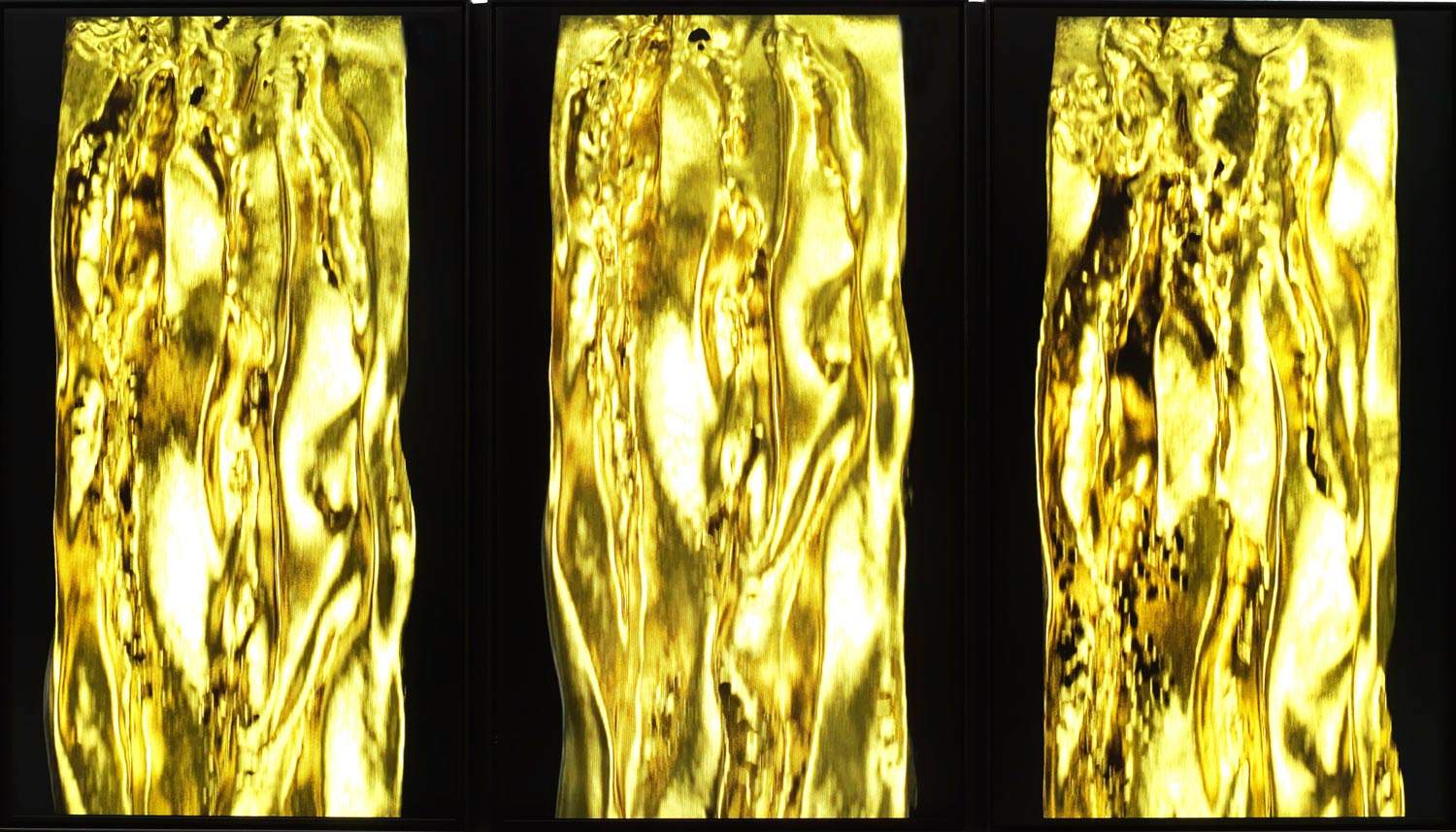Florence, Fabrizio Plessi stars in extensive retrospective at Tornabuoni Arte
It is Fabrizio Plessi (Reggio Emilia, 1940) who is the protagonist of the new exhibition that Tornabuoni Arte is setting up at the gallery’s historic Florentine venue, Lungarno Benvenuto Cellini 3. Thus, the exhibition Emozioni digitali (Digital Emotions), scheduled from September 21 to November 18, 2022, goes on stage in Florence . The exhibition brings together more than thirty works, from projects from the 1970s to the 1990s, up to the most recent video production of the artist, who is considered a digital pioneer, among the first experimenters of digital matter in Italy, so much so as to be called “the aborigine of digital.” An artist who has been able to combine nature and artifice, art and technology, giving life to poetic creations of great evocative impact, where the primordial elements such as water, fire, lightning and earth constantly recur, in an unstoppable flow of images.
On the upper floor of the gallery, a number of projects on paper from the 1970s will be exhibited, with richly annotated drawings and images that testify to the extent to which his work has always been based on rigorous methodology and study, attentive to the tradition of hand drawing. “Each work is the result of a long work,” explains art historian Sonia Zampini in the text NATURA MANIFESTA, published in the exhibition catalog, “which is based on preparatory drawings to which Plessi devotes particular attention. Studies of graphic and chromatic annotations, they create a thicket of structured and concrete observations to which he entrusts the development of the subsequent work, understood as a tangible vision of the initial project. The videos will later take up this ideal sheet structure or multi-sheet composition that, with increased measures, will be defined as ideal windows capable of showing a condition that stands beyond the physicality that contains it, a kind of filter between two hypothetical worlds and visions.”
Along with the projects, also in this section, the public will find some works from the Caryatids series, from the early 2000s, some on paper, others sculptures, where the physicality of objects and materials (straw, amphorae, stones) are harmoniously combined with digital images. On the lower floor, the exhibition continues with the most recent video works, divided by theme, in a sequence that returns viewers to the essence of the elements portrayed: from the fluidity and force of water flowing and transcending the tangible perimeters of the work, to the glow of lightning that briefly illuminates the darkness of the night, to the incandescence of fire that also manifests itself in the strip marked by the passage of lava. These installations, connoted with a character of “wonder,” are also joined by the regal ones of “Golden Waterfalls,” visions that recover the preciousness of ancient art, as well as the “Mosaic” series, where the artistic tradition of the golden tile technique acquires an extremely contemporary visual rendering. Plessi uses technology as a material to be shaped, just as a sculptor would do with marble. He does not stop at the mere reproduction of the image or documentation of reality but, as Achille Bonito Oliva pointed out, “plays with complex themes such as mirroring and the double, narcissus and memory, with the production of sophisticated images capable of evoking Mannerist ’sprezzatura’ for their virtuosity.”
“I’m confronted with new avenues every time, and this digital avenue, which we called electronic in my day, has always been for me a way of bringing matter to life,” Plessi tells Serena Tabacchi, director and co-founder of MoCDA, Museum of Contemporary Digital Art, London, in the interview published in the catalog, which was produced especially for this occasion. “While everyone was painting or making sculptures, I was thinking about how the TV channel could be shaped, thanks to its pixels and its immaterial texture.”
Tornabuoni Arte also presents a section dedicated to NFTs, a collection that the artist has created in recent years, whose subjects remain those of Nature, and which completes his artistic production. Plessi, who, as already pointed out, is an experimenter, does not shy away from the fascination with the evolution that the uniqueness of the digital and the use of blockchain technology entail, further actualizing his language.
In the catalog, edited by Tornabuoni Arte, that accompanies the exhibition, in addition to texts by Serena Tabacchi and Sonia Zampini, will be republished L’arte di Fabrizio Plessi by Achille Bonito Oliva, taken from the exhibition Plessi Videocruz at Museo Espanol de Arte Contemporaneo, Madrid, 1990, and The Art of Fabrizio Plessi by John G. Hanhardt, written for the exhibition Fabrizio Plessi, Guggenheim Museum Soho, New York, 1998.
Fabrizio Plessi was born in Reggio Emilia in 1940. He lives and works between Venice and Palma de Mallorca. He has participated in major exhibitions such as Documenta in Kassel, and in fourteen editions of the Venice Art Biennale. He has exhibited in prestigious international venues including the Guggenheim in New York, the Scuderie del Quirinale in Rome, and the Pushkin Museum in Moscow. The Plessi Museum, designed by the artist as a work of architecture, sculpture and design, opened at the Brenner Pass in 2013.
Pictured: Fabrizio Plessi, Golden Falls #T103 (2021; digital and sound program, 98 x 175 x 6 cm). Courtesy of Tornabuoni Arte
 |
| Florence, Fabrizio Plessi stars in extensive retrospective at Tornabuoni Arte |
Warning: the translation into English of the original Italian article was created using automatic tools. We undertake to review all articles, but we do not guarantee the total absence of inaccuracies in the translation due to the program. You can find the original by clicking on the ITA button. If you find any mistake,please contact us.




























